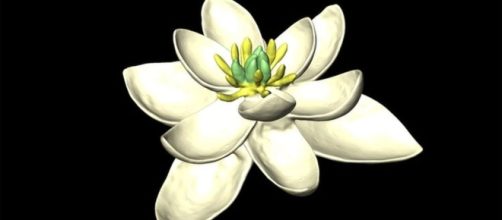When the world's first flower blossomed sometime between 250 million and 140 Million Years ago, it had over five carpels (female reproductive organ of a flower) and more than 10 stamens (male reproductive organ of the flower), according to a new study published in the science journal Nature.
The ancient flower was bisexual
The bisexual flower that looked somewhat similar to a white lily or magnolia is supposedly the last common ancestor of Fire lilies, Ghost orchids, Juliet’s rose and approximately 300,000 other species of flowers that exist today.
This is what the first flower on Earth might have looked like https://t.co/0diwfvCnBq
— Hervé Sauquet (@hsauquet_upsud) August 1, 2017
The researchers mentioned that “in spite of similarities with some extant flowers", the ancient floret doesn't share the exact combination of traits with any present day species of flowers.
To create a detailed reconstruction of the ancestral flower, scientists from the University of Paris-Sud and the University of Vienna amassed data from scientific studies to create “the largest data set of floral traits ever assembled.” The analysis included “samples from 792 different species, spanning 63 orders (98 percent) and 372 families (86 percent) of known flowering plants", said a Laboratory Equipment report.
Later, a 3-D rendition of the flower was created mentioning the physical traits of the species. The ancient flower hasn’t yet been named.
“The finding suggests that natural selection pushed the plants to a less complex floral plan over time", reported ScienceNews.
However, the researchers acknowledge that the models used in the study are speculative since no fossilised flowers dating back to140-million-years-ago have been found until now.
Flower fossils are extremely rare
The team led by Hervé Sauquet, an evolutionary biologist at the University of Paris Sud, also noted in the paper that “estimating features of the ancestral flower is a difficult task" as there are no fossil flowers from that era nor any "suitable outgroups for direct comparison."
Because of the fragile structures of the flowers, fossil flowers are very hard to come by.
The world’s first fossil flower, aquatic Montsechia vidalii, dates back to over 125 million years—that’s at least 10 million years after the time when scientists estimate that the first flower on Earth sprouted.
Paleobotanist identifies what could be the worlds first flower https://t.co/VX98ZD3Kqs pic.twitter.com/jXqmuPkUnB
— Life Biotechnology (@Lifebiotech7) November 9, 2016
Discovered in Spain, the aquatic Montsechia vidalii once bloomed in freshwater lakes during the early Cretaceous period, at a time when dinosaurs like the Brachiosaurus and Iguanodon roamed on Earth.
Earlier, in 2002, paleobotanists had found the fossilised remains of a flower species in north-east China. Named Archaefructus sinensis or the "ancient fruit from China," the flowering plant lived approximately 125 million years ago.


